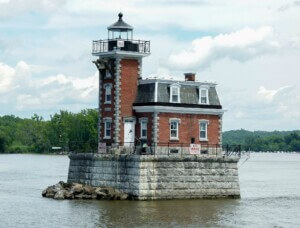On April 10, under former Mayor Rahm Emanuel, the Chicago City Council approved an overhaul to the Chicago Building Code, the first update since 1949. This announcement has invigorated the local design, construction, and real estate industries as it brings the building code in line with national standards and promises greater affordability, sustainability, and innovation to modernize the city. It’s a big win for architects building in Chicago.
A couple of major takeaways from the update:
- A wider range of building materials will be allowed for construction,
- New sprinkler system and seismic requirements will enhance safety,
- Cost-effective construction of single-family homes will be incentivized,
- There will be greater opportunities to convert existing basements and attics into livable space,
- Additional flexibility for rehab work will be provided, encouraging the preservation of existing buildings,
- The permitting process will be streamlined,
- Newer methods and approaches to construct green buildings will be allowed, and,
- The city will adopt International Building Code standards, making it easier to follow Chicago-specific code requirements.
Chicago’s code changes are meant to improve and encourage new building projects of all sizes by increasing affordability towards materials, construction, and even time spent in the permitting process. A clear emphasis has been placed on making residential projects more accessible and achievable, a potential boon for the real estate industry.
It is evident in the city’s lack of new construction—single-family, two- and three-apartment housing typologies have slowly died-out in Chicago—that home renovations and historic rehabs have been difficult to achieve when abiding by Chicago’s existing code. Existing buildings that previously had no hope for a realistic update were felled either by demolition or vacancy, leading to even deeper issues around housing, safety, and social issues. Previously, if an owner added more than 25 percent to the building’s square footage, then the whole project had to comply with new construction building codes no matter if it were a single-family, neighborhood home, or downtown skyscraper. To alleviate such issues, the new code will offer more flexible requirements to differentiate between a project type and its appropriate needs. Moreover, the reduction of the minimum ceiling height requirement and added options to meet light and ventilation requirements will boost accessory dwelling units.
Chicago’s need for a more cohesive, citywide strategy to approach affordable housing is more apparent than ever. These changes could attract more investment from the average Joe and developers as projects appear more achievable than resource-sucking and expensive. Within her first days of office, new Chicago mayor Lori Lightfoot addressed Chicago’s development community with a strapping message: “Developers can no longer skip their responsibilities by taking tax dollars but leaving it to someone else to solve our affordable housing crisis.”
With these code changes, it’s expected that more developers will take on affordable housing projects, a dire need in Chicago and most other cities. Still, developers will need to grapple with the political explosiveness that surrounds gentrification. Neighborhoods like Pilsen and Logan Square are known to fight new construction and developer-led projects, whereas others, such as Garfield Park, struggle to attract interest.
The city has anticipated potential drawbacks with the new code and has allowed themselves flexibility in altering it as challenges arise. The overhaul will be gradually phased in, and the first phase is expected to be implemented in Fall 2019, with further phasing between December 1, 2019, to July 31, 2020.
Read and download the full ordinance here.











